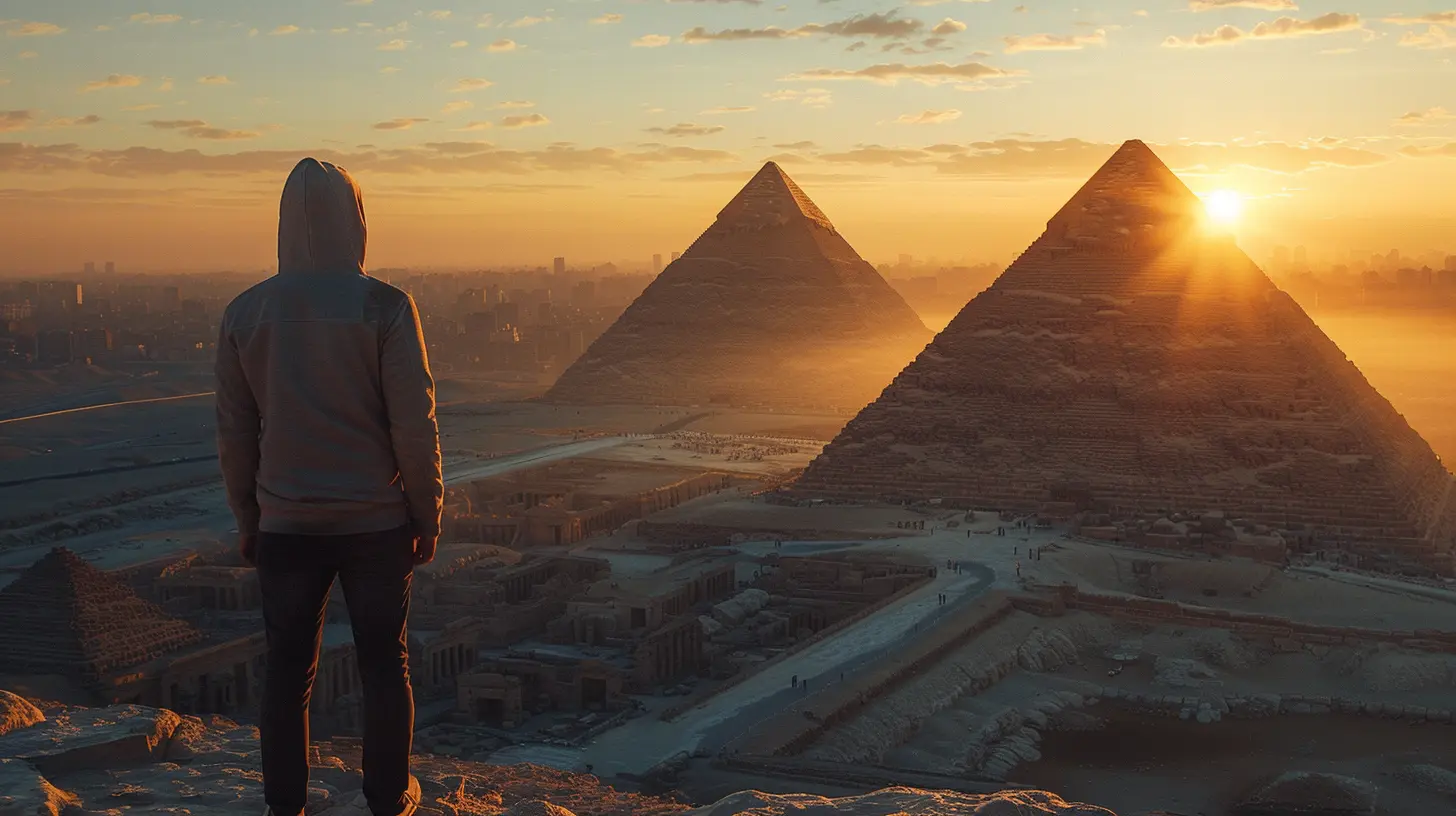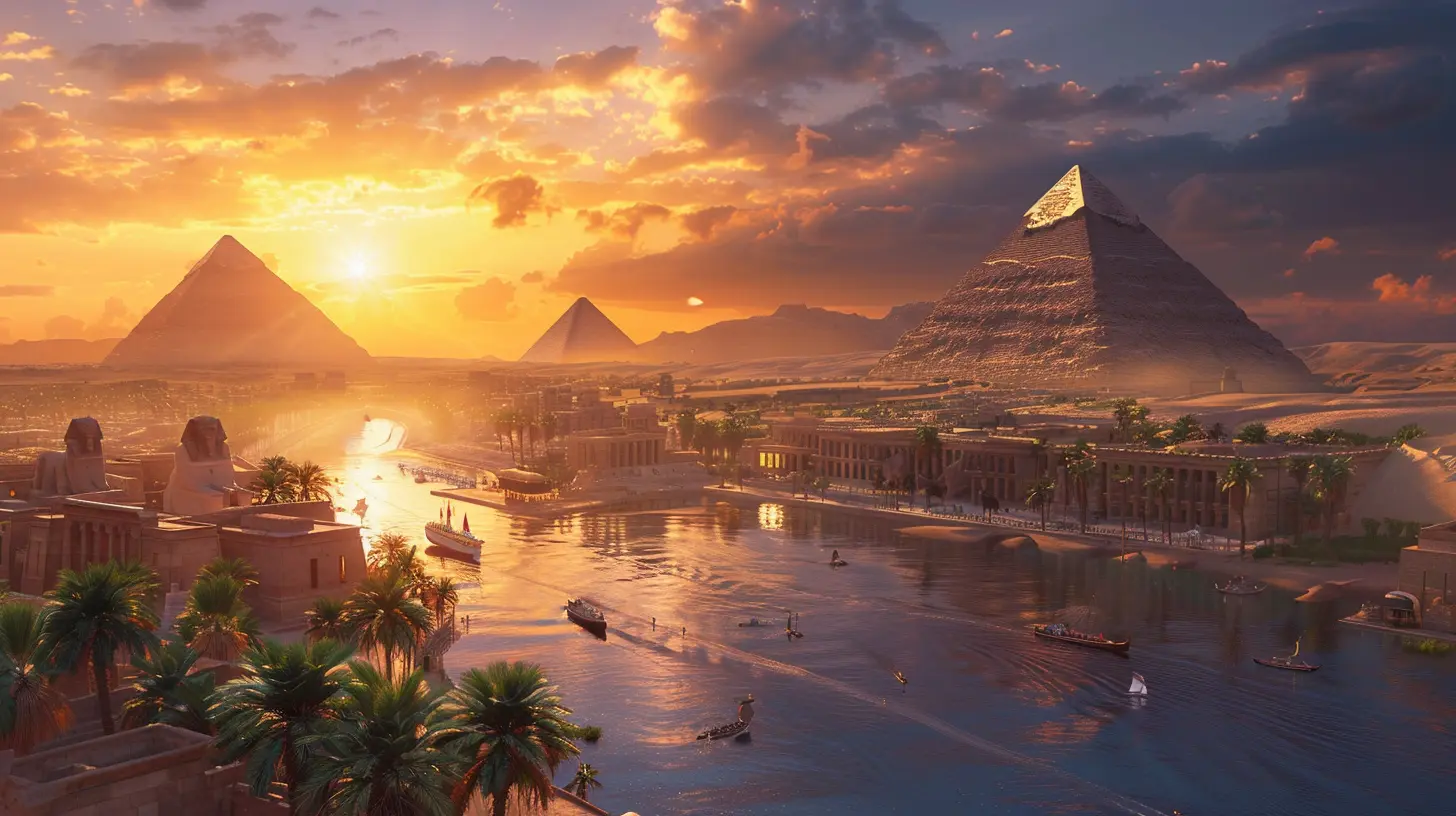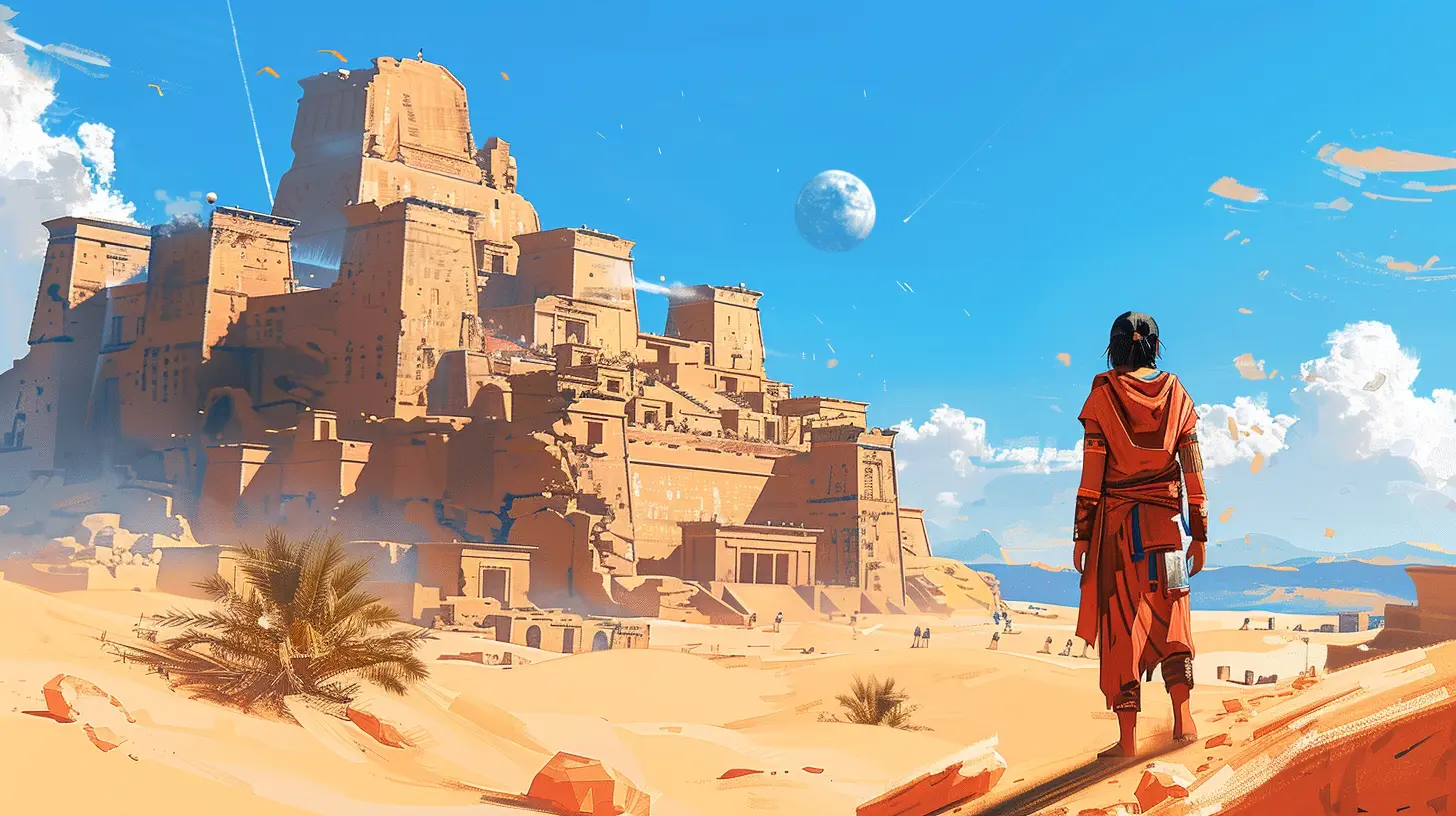Ancient Wonders of Egypt: Exploring the Great Pyramids
15 September 2025
Have you ever dreamed of standing face-to-face with history? Like, really old history—the kind that whispers stories from thousands of years ago? Well, you’re in for a treat. Let’s talk about one of the most mind-blowing landmarks on our planet: the Great Pyramids of Egypt. These architectural beasts have stood tall for over 4,500 years, and they’re just as mysterious and jaw-dropping as they were back then.
So, grab your virtual backpack—we're going on a journey to the land of Pharaohs, sandstorms, and golden sunsets.
Stepping Into Ancient Egypt
Egypt isn’t just about camels and deserts. It’s a living, breathing history book. The kind of place where myths, legends, and facts blur together. You’ll find temples that still echo the footfalls of ancient priests and statues carved with stories taller than your imagination.But if there’s one place that screams “ancient wonder,” it’s got to be the Great Pyramids of Giza. These towering giants are the last surviving members of the original Seven Wonders of the Ancient World. Let that sink in for a second.
Where Are the Great Pyramids?
Let’s clear one thing up—these pyramids aren’t lost in the middle of nowhere. They’re actually just outside the bustling city of Cairo, in an area called Giza. Yup, skyscrapers on one end and 4,500-year-old tombs on the other. Talk about a contrast!In Giza, three major pyramids steal the show:
- The Great Pyramid of Khufu (also called Cheops)
- The Pyramid of Khafre (Chephren)
- The Pyramid of Menkaure
Each one built for a pharaoh, and each one still standing strong centuries later.
The Great Pyramid of Khufu: The OG Wonder
Alright, let’s start with the big guy—Khufu's pyramid. This is the oldest and the largest of the three. When it was first built around 2560 BCE, it stood at a staggering 481 feet tall. Today, it's a bit shorter due to erosion, but at 455 feet, it’s still a king among stones.Here’s a crazy thing: the Great Pyramid was the tallest man-made structure in the world for over 3,800 years. That’s longer than most countries have existed!
Built with over 2 million limestone blocks, each weighing between 2 to 15 tons, people are still scratching their heads about how ancient Egyptians pulled this off without modern machines. Aliens? Maybe not. Genius engineering? Absolutely.
Secrets Hidden Inside
Contrary to what many believe, the pyramids aren’t just hollow triangles. Inside the Great Pyramid, you’ll find a labyrinth of tunnels and chambers. There’s the King’s Chamber, Queen’s Chamber, and the mysterious Grand Gallery.And then there’s the question—what were they really used for?
The general consensus is they were built as tombs. But no mummies were ever found inside the Great Pyramid. Treasure hunters, looters, or something more mysterious? That’s part of the thrill.
The Pyramid of Khafre: The Illusionist’s Pyramid
Next in line is the Pyramid of Khafre, the second-tallest but arguably the most photogenic. Why? Because it still has some of its original smooth casing stones at the top, giving it that iconic polished look.It also sits on higher ground, so from certain angles, it actually looks taller than the Great Pyramid. Sneaky, huh?
Right beside it stands the almighty Sphinx—half lion, half human, full-on mystery. With its weathered face and missing nose, it’s one of the most recognizable monuments in the world. And guess what? We still don’t fully know who built it or why.
The Pyramid of Menkaure: The Underrated Gem
The smallest of the trio, Menkaure’s pyramid may not have the size, but it sure packs charm. It has a more refined structure and was once covered in luxurious granite.Many visitors skip it thinking it’s just the “baby pyramid,” but don’t let that fool you. It’s got plenty of tales to tell, and if you're lucky, you might even catch fewer crowds here.
How Were They Built? The Million-Dollar Question
This is where things get juicy.Historians, archaeologists, and engineers have debated for years about how the pyramids were constructed. There are no blueprints, no ancient instruction manual. Just theories... and more theories.
Some say they used massive ramps. Others suggest the blocks were dragged using sleds and wet sand. And of course, the internet loves to whisper about alien help.
The truth? We may never know the full story. But the mystery is half the magic, right?
Visiting the Pyramids: Tips for First-Timers
Okay, let’s talk logistics. If you’re planning a trip to Egypt (and you should), here’s what you need to know about visiting the pyramids:1. Best Time to Visit
Honestly, Egypt gets hot—like fry-an-egg-on-the-rock hot. The best time to visit is between October and April when the weather is cooler and more comfortable for walking around.2. What to Wear
Comfy shoes are a must. You’ll be walking—a lot. Lightweight, breathable clothes, a hat, and sunglasses will save you from the sun’s wrath. And don’t forget sunscreen.3. Guided Tours or Solo?
Both have their perks. If you’re a history buff, a guide can bring the stories to life. But going solo lets you move at your own pace. Either way, bring a bottle of water and a curious mind.4. Be Wary of Touts
Like many major tourist spots, you’ll find people offering camel rides, souvenirs, and “authentic” tours. Be polite but firm if you're not interested, and always agree on prices upfront.Surprising Facts That’ll Blow Your Mind
Still not convinced the pyramids are out-of-this-world cool? Check out these jaw-dropping facts:- The pyramids are aligned almost perfectly with the stars of Orion’s Belt.
- The ancient Egyptians didn’t use wheels to move the blocks—they hadn’t invented them yet!
- The limestone casing stones once made the pyramids shine like giant jewels in the desert sunlight.
- Despite centuries of earthquakes, looting, and erosion, the pyramids have stood the test of time with barely a wobble.
Pretty impressive for something built before most people even figured out farming properly, right?
Why the Great Pyramids Still Matter
You might be wondering—why all the fuss about some old stones? Here’s the thing: the pyramids are more than just ancient graves. They’re a symbol of human ambition, ingenuity, and imagination.They teach us that even thousands of years ago, people dreamed big. They looked to the skies for inspiration and poured their lives into building something that would last forever.
And honestly, standing in front of those colossal structures, feeling the desert wind against your face—it makes you realize just how small you are. But also how incredible human beings can be when they put their minds (and hands) to work.
Final Thoughts
The Great Pyramids of Egypt aren’t just stones stacked in a triangle. They’re a heartbeat from the past, echoing through time. Visiting them isn’t just a trip for your bucket list—it’s a moment of connection with something far greater than yourself.Whether you're an adventurer, a history buff, or simply someone looking for awe-inspiring sights, the Great Pyramids will give you goosebumps in the best way possible. So, when you’re ready for an unforgettable journey to the past—Egypt is waiting.
And hey, don’t forget your camera (and maybe a little space in your heart for magic).
all images in this post were generated using AI tools
Category:
Must See LandmarksAuthor:

Tracie McAdams
Discussion
rate this article
1 comments
Ashley Rogers
The Great Pyramids of Egypt epitomize human ingenuity and are a testament to ancient civilizations. Their architectural brilliance and historical significance offer a captivating glimpse into the past. Exploring these wonders is not only a journey through time but also an unforgettable travel experience.
September 17, 2025 at 4:24 PM

Tracie McAdams
Thank you for your insightful comment! The Great Pyramids truly are a remarkable testament to ancient ingenuity and a must-experience for anyone drawn to history.


